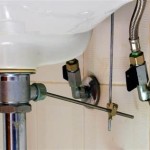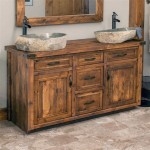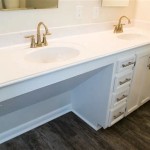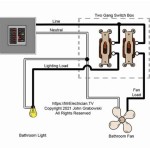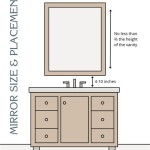How to Clean Fungus From Bathroom Ceiling
The bathroom, a space intended for hygiene and cleanliness, is ironically a prime breeding ground for fungus. The warm, moist environment created by showers and baths fosters the growth of these unwanted organisms, particularly on the ceiling where humidity tends to accumulate. Addressing fungal growth promptly and effectively is crucial not only for aesthetic reasons but also for maintaining a healthy indoor environment. Neglecting the issue can lead to further spreading, structural damage, and potential health concerns. This article provides a detailed guide on how to safely and thoroughly clean fungus from your bathroom ceiling.
Before initiating any cleaning process, it is essential to identify the type of growth present. While the term "fungus" is used broadly, the most common culprit in bathrooms is mold. Mold manifests in various colors, including black, green, brown, and white. It often appears as fuzzy or slimy patches on surfaces. Distinguishing between mold and mildew, another common bathroom growth, is important. Mildew usually appears as a flat, powdery coating, often gray or white. While both are types of fungus, mold tends to penetrate deeper into materials and is generally more difficult to remove. If the growth is extensive, excessively dark, or accompanied by a musty odor, it may be necessary to consult with a professional mold remediation service. Professional assessment can determine the extent of the problem and ensure thorough removal.
Safety precautions are paramount when dealing with any type of fungal growth. Mold and mildew spores can trigger allergic reactions, respiratory problems, and other health issues, especially in individuals with compromised immune systems, asthma, or allergies. Before commencing the cleaning process, ensure adequate ventilation in the bathroom by opening windows and turning on the exhaust fan. Wear appropriate personal protective equipment (PPE) to minimize exposure to spores and cleaning solutions. This includes:
- Gloves: Wear waterproof, chemical-resistant gloves to protect your skin from irritants and potential fungal contact.
- Eye Protection: Goggles or safety glasses are essential to prevent spores and cleaning solutions from entering your eyes.
- Mask or Respirator: A properly fitted N95 respirator or a mold-rated mask is crucial to filter out airborne spores and prevent inhalation.
- Protective Clothing: Wear old clothing that you can discard or wash immediately after cleaning. Consider wearing a disposable coverall suit for added protection, particularly if the infestation is significant.
Preparation and Gathering of Supplies
A successful cleaning endeavor hinges on proper preparation and the availability of the right tools and cleaning agents. Before you begin, remove any items from the bathroom that could be affected by the cleaning process, such as towels, toiletries, and decorative items. Cover or remove any light fixtures to prevent damage from cleaning solutions. Prepare the cleaning area by laying down a drop cloth or plastic sheeting to protect the floor from drips and spills. Gather all necessary supplies in a convenient location for easy access. The following list outlines the essential tools and cleaning solutions you will need:
- Spray Bottle: A sturdy spray bottle is necessary for applying the cleaning solution evenly to the affected area.
- Scrub Brush or Sponge: Choose a scrub brush with stiff bristles or a durable sponge for scrubbing away the fungus. Avoid using abrasive pads that could damage the ceiling surface.
- Ladder or Step Stool: A stable ladder or step stool is crucial for safely reaching the ceiling. Ensure it is placed on a level surface and is sturdy enough to support your weight.
- Clean Cloths or Paper Towels: Use clean cloths or paper towels for wiping away the cleaning solution and drying the ceiling.
- Cleaning Solutions: Several effective cleaning solutions can be used to remove fungus from bathroom ceilings. Some common options include:
- Bleach Solution: A solution of one part bleach to ten parts water is a potent disinfectant and mold killer. However, it is important to use bleach cautiously and ensure adequate ventilation, as it can release harmful fumes. Never mix bleach with ammonia or other cleaning agents, as this can create toxic gases.
- Vinegar: White vinegar is a natural antifungal agent that is less harsh than bleach. Spray undiluted vinegar onto the affected area and let it sit for an hour before scrubbing.
- Hydrogen Peroxide: A 3% hydrogen peroxide solution is another effective and less toxic alternative to bleach. Spray it onto the affected area, let it sit for 10-15 minutes, and then scrub.
- Baking Soda Paste: A paste made from baking soda and water can be used to scrub away mold and mildew. Baking soda is a mild abrasive and also helps to absorb odors.
- Commercial Mold and Mildew Removers: Several commercial mold and mildew removers are available at hardware stores and home improvement centers. Follow the manufacturer's instructions carefully when using these products.
The Cleaning Process: Step-by-Step Guide
Once you have gathered your supplies and prepared the cleaning area, you can begin the process of removing the fungus from the bathroom ceiling. Follow these steps for a thorough and effective cleaning:
- Ventilate the Bathroom: Open windows and turn on the exhaust fan to ensure adequate ventilation throughout the cleaning process.
- Apply the Cleaning Solution: Fill your spray bottle with the chosen cleaning solution. Spray the affected area of the ceiling thoroughly, ensuring that the solution covers all visible fungus. Avoid oversaturating the ceiling, as this could damage the underlying material.
- Allow the Solution to Dwell: Let the cleaning solution sit on the ceiling for the recommended dwell time. This allows the solution to penetrate the fungal growth and kill the spores. The dwell time will vary depending on the cleaning solution used. For bleach, vinegar, and hydrogen peroxide, a dwell time of 10-60 minutes is usually sufficient. Refer to the product label for commercial mold and mildew removers.
- Scrub the Affected Area: After the dwell time, use your scrub brush or sponge to gently scrub the affected area of the ceiling. Apply moderate pressure to dislodge the fungus. Avoid excessive scrubbing, as this could damage the ceiling paint or texture.
- Rinse and Wipe the Ceiling: Once you have scrubbed the fungus, use a clean cloth or sponge dampened with water to rinse the ceiling. Wipe away any remaining cleaning solution and loosened fungus.
- Dry the Ceiling Thoroughly: Use a clean, dry cloth or paper towels to dry the ceiling thoroughly. Ensure that all moisture is removed, as dampness can promote further fungal growth. You can also use a fan to circulate air and speed up the drying process.
- Inspect and Repeat if Necessary: After the ceiling is dry, inspect the area for any remaining signs of fungus. If necessary, repeat the cleaning process to ensure complete removal.
- Dispose of Cleaning Materials: Properly dispose of any contaminated cleaning materials, such as cloths, sponges, and paper towels. Seal them in a plastic bag before discarding them to prevent the spread of spores. Wash any reusable cleaning tools thoroughly with disinfectant.
Preventing Future Fungus Growth
Once the fungus has been successfully removed, taking proactive measures to prevent future growth is crucial. The following strategies can help maintain a fungus-free bathroom environment:
- Improve Ventilation: Ensure adequate ventilation in the bathroom by consistently using the exhaust fan during and after showers or baths. If your bathroom lacks an exhaust fan, consider installing one. Opening a window after showering can also help reduce humidity.
- Control Humidity: Keep humidity levels in the bathroom low. Consider using a dehumidifier to remove excess moisture from the air, especially in humid climates.
- Address Leaks Promptly: Repair any leaks in the bathroom, such as dripping faucets or leaky pipes, immediately. Leaks provide a constant source of moisture that promotes fungal growth.
- Clean Regularly: Clean the bathroom regularly, paying particular attention to areas prone to moisture, such as the shower, bathtub, and ceiling. Wipe down surfaces after each use to remove excess water.
- Use Mold-Resistant Paint: When painting the bathroom ceiling, use a mold-resistant paint. These paints contain additives that inhibit the growth of mold and mildew.
- Proper Sealing: Ensure all caulking and grout around the shower, bathtub, and sink are properly sealed. Re-caulk or re-grout as needed to prevent water from seeping into walls and ceilings.
- Allow Surfaces to Dry: After showering or bathing, allow surfaces to dry completely before closing the shower door or curtain. This prevents moisture from being trapped in the area.
By following these guidelines, you can effectively clean fungus from your bathroom ceiling and prevent its recurrence, creating a healthier and more pleasant bathroom environment. Addressing the root causes of moisture buildup is key to long-term success. Regular maintenance and vigilance are essential to keeping your bathroom fungus-free.

Cleaning Mold From Bathroom Ceilings Like A Pro Lovetoknow

How To Remove Black Mold From A Bathroom Ceiling

Bathroom Ceiling Mold Removal When To Clean Call Branch Environmental

Don T Let Mould Take Over How To Remove It From Your Ceiling

Mold On Bathroom Ceiling How To Clean Off

Remove Bathroom Mould From Your Ceiling

Black Spots On The Bathroom Ceiling Flood Water Damage Honolulu Oahu Hawaii Md Restoration

Mold On Bathroom Ceiling How To Clean Off

Cleaning Mrs Hinch Fans Share Tips To Remove Ceiling Mould Express Co

How Do You Remove Mold From Bathroom Textured Ceiling Hometalk
Related Posts
